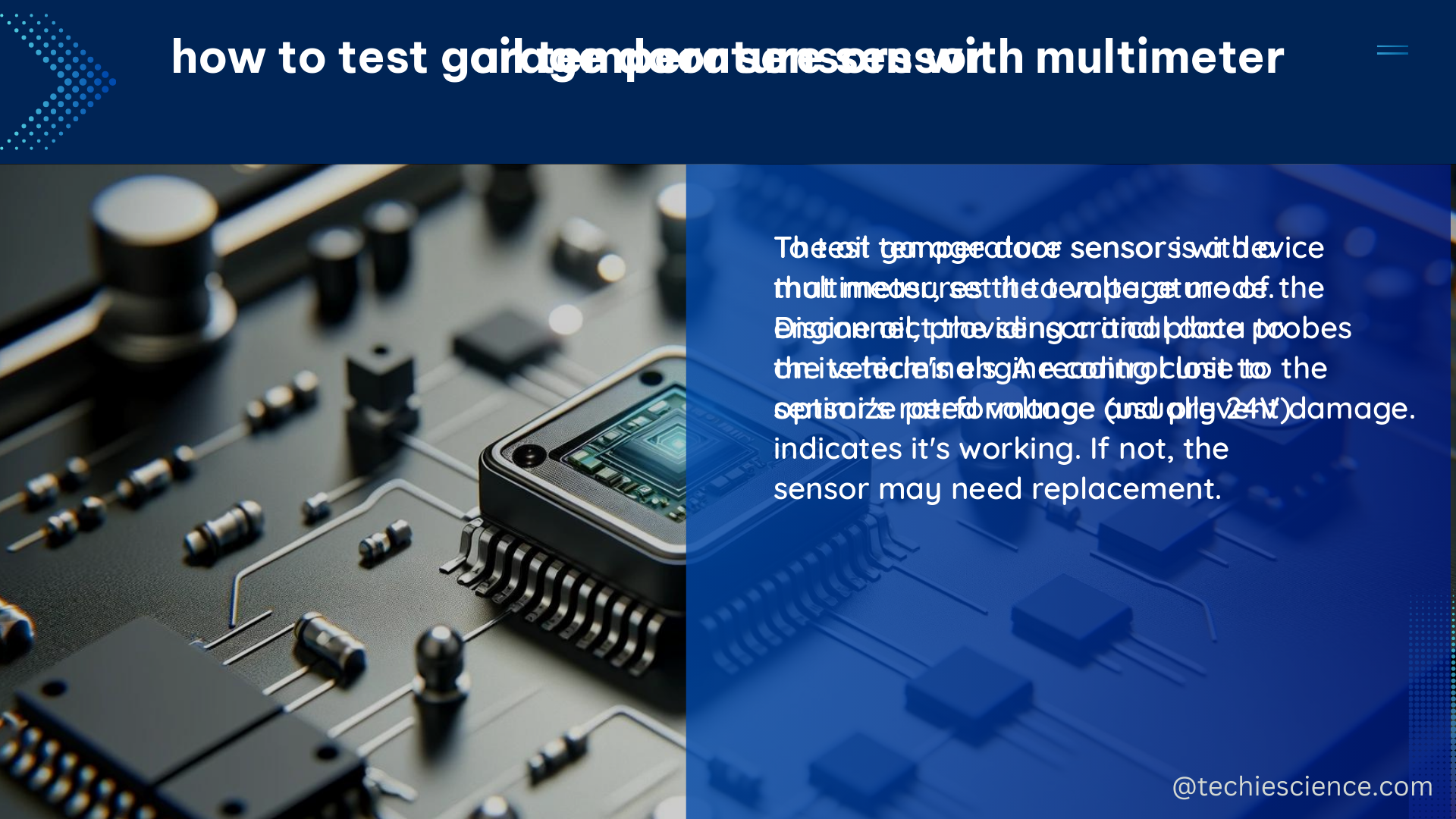The oil temperature sensor is a critical component in various systems, including automotive, industrial, and aerospace applications. It measures the real-time temperature of the oil, ensuring optimal performance and preventing potential damage due to overheating. Understanding the technical specifications, proper installation, and accurate calibration of the oil temperature sensor is essential for reliable and efficient operation.
Technical Specifications of Oil Temperature Sensors
Temperature Range
Oil temperature sensors typically have a wide operating temperature range, often spanning from -40°C (-40°F) to +125°C (+257°F) or even higher. This extensive range allows the sensors to function accurately in a variety of environments, from frigid winter conditions to scorching summer heat.
Accuracy
The accuracy of oil temperature sensors is typically within ±0.1°C (±0.18°F) to ±1°C (±1.8°F), depending on the specific model and application. High-precision sensors can achieve accuracies as low as ±0.1°C, ensuring reliable temperature measurements for critical applications.
Pressure Rating
Oil temperature sensors are designed to withstand high fluid pressures, often up to 50 bar (725 psi) or more. This pressure rating ensures the sensor’s durability and longevity in demanding environments, such as high-performance engines or industrial machinery.
Protection Class
To safeguard against environmental factors, oil temperature sensors typically have a high protection class, such as IP67. This rating indicates that the sensor is dust-tight and can withstand temporary immersion in water, making it suitable for use in harsh conditions.
Interface
Oil temperature sensors can communicate with other systems using various interfaces, including Modbus RTU, 4-20 mA, and CAN bus. This versatility allows for seamless integration with a wide range of control systems, data acquisition platforms, and monitoring applications.
Fluid Compatibility
Oil temperature sensors are compatible with a variety of fluids, including mineral oils, synthetic oils, and even some hydraulic fluids. This broad compatibility ensures that the sensor can be used in a wide range of applications, from automotive engines to industrial gearboxes.
DIY Installation and Calibration of Oil Temperature Sensors

Sensor Selection
When selecting an oil temperature sensor, it is crucial to consider the specific requirements of your application. Factors such as temperature range, accuracy, pressure rating, protection class, interface, and fluid compatibility should be carefully evaluated to ensure the sensor’s suitability.
Installation
Proper installation of the oil temperature sensor is essential for accurate and reliable measurements. The sensor should be installed in a location that provides a representative sample of the oil temperature, such as near the oil inlet or outlet. Ensure that the sensor is securely fastened to prevent damage and maintain accurate readings.
Calibration
Calibrating the oil temperature sensor is a critical step to ensure the accuracy of the measurements. This process typically involves comparing the sensor’s readings to a known reference temperature, such as a calibrated thermometer or a temperature bath. Depending on the sensor’s design, the calibration may involve adjusting internal components or trimming resistors to fine-tune the output.
Performance Monitoring
Regularly monitoring the performance of the oil temperature sensor is essential to maintain its accuracy and reliability. This can be done by comparing the sensor’s readings to a reference temperature source or by performing routine maintenance and cleaning to prevent fouling or damage.
Conclusion
The oil temperature sensor is a vital component in various systems, providing real-time temperature measurements to ensure optimal performance and prevent potential damage. By understanding the technical specifications, proper installation, and accurate calibration of the oil temperature sensor, you can ensure reliable and efficient operation in your applications.
References
- Sensors for daily life: A review – ScienceDirect. (n.d.). Retrieved from https://www.sciencedirect.com/science/article/pii/S2666351121000425
- International Performance Measurement and Verification Protocol – NREL. (n.d.). Retrieved from https://www.nrel.gov/docs/fy02osti/31505.pdf
- DEPARTMENT OF DEFENSE STANDARD PRACTICE – CADE. (n.d.). Retrieved from https://cade.osd.mil/Content/cade/files/coplan/MIL-STD-881F_Final.pdf
- OIL QUALITY MANAGEMENT – Martechnic®. (n.d.). Retrieved from https://www.martechnic.com/pdf/catalogue.pdf

The lambdageeks.com Core SME Team is a group of experienced subject matter experts from diverse scientific and technical fields including Physics, Chemistry, Technology,Electronics & Electrical Engineering, Automotive, Mechanical Engineering. Our team collaborates to create high-quality, well-researched articles on a wide range of science and technology topics for the lambdageeks.com website.
All Our Senior SME are having more than 7 Years of experience in the respective fields . They are either Working Industry Professionals or assocaited With different Universities. Refer Our Authors Page to get to know About our Core SMEs.